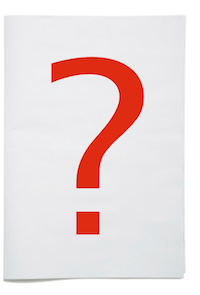How to plan a product backgrounder
Once upon a time, every white paper was a product backgrounder.
A backgrounder is good for explaining an unfamiliar or misunderstood product to a technical audience.
For a prospect at the end of the sales cycle, or to back up a product launch, a backgrounder can be powerful.
These documents do have shortcomings. Unless your company is in the Fortune 500, a backgrounder will not generate as many leads as a problem/solution white paper nor attract as many readers as a numbered list.
But they’re relatively easy and low-risk to produce. So how to get started?
 To plan a backgrounder, you need to know 6 items:
To plan a backgrounder, you need to know 6 items:
1. The audience
2. The purpose
3. The call to action
4. The key features of the product
5. The key benefits of each feature
6. A descriptive title.
Let’s look a little closer at each of these items.
1. The audience
To help target your backgrounder, you’ll want to identify your ideal reader by:
- company type including size, sector and region
- demographics such as education, age and job title
- psychographics like experience, interest and stress
- technographics such as how the content will be accessed: desktop, laptop, tablet or mobile device.
For more, see Know your audience for a white paper.
2. The purpose
Do you want to educate prospective buyers? Train your sales force or channel partners? Knock a competitor off a buyer’s shortlist? Help close sales?
Note that “generate leads” is not on this list, because a backgrounder is not the best at attracting new prospects.
3. The call to action at the end
What do you want your ideal reader to do after they read your white paper?
Do not simply send people to your home page to wander aimlessly.
Instead, send them to a specific landing page. Point them to a short presentation or demo. Invite them to use an interactive calculator. Have them call an 800 number or request a free trial version.
In general, the more specific the call to action, the more effective… and the easier it is to measure the results.
4. The key features of the product
List the most unique and powerful features of the product in some purposeful order. This could be from the most important to the least, the most familiar to the least, the newest to oldest, by workflow or by some other scheme.
Don’t try to cover everything in one backgrounder. Be selective. Four to six features can be plenty.
In fact, some backgrounders are built around a single feature. And some describe a bundle of features related to one function such as security, workflow or whatever.
5. The key benefits of the feature
Features without benefits have little appeal. Not every reader can visualize how each raw feature can help in their own environment.
To make your backgrounder more persuasive, describe the key benefits for every key feature.
One way to make benefits clear is to introduce a running example, perhaps a fictitious company like Acme Software, and show dummy data from Acme in every screenshot.
6. A descriptive title
A product backgrounder needs a descriptive title.
A good title clearly conveys the content of the white paper, who it’s aimed at and the benefits of reading it.
Naming a target job title or the ideal reader’s size or type of business are good approaches.
Unlike other flavors of white papers, it is quite acceptable to mention your product or company name in the title of a product backgrounder. In fact, it’s hard not to.
With a good handle on these six essentials, your product backgrounder will be easy to research and straightforward to write.
To find out more about product backgrounders, see How to pick the perfect flavor for your next white paper.
Want to hear whenever there’s a fresh article on this site? Subscribe here to stay in the know on long-form content. From time to time, we’ll also send you word about some great new resource or training. And you can unsubscribe any time.




I’m an aspiring copywriter. This is one of the clearest descriptions of white paper “backgrounders” I’ve read.
( Actually, i didn’t know what a backgrounder was)!
Thank You!
Also for the ref to your book.